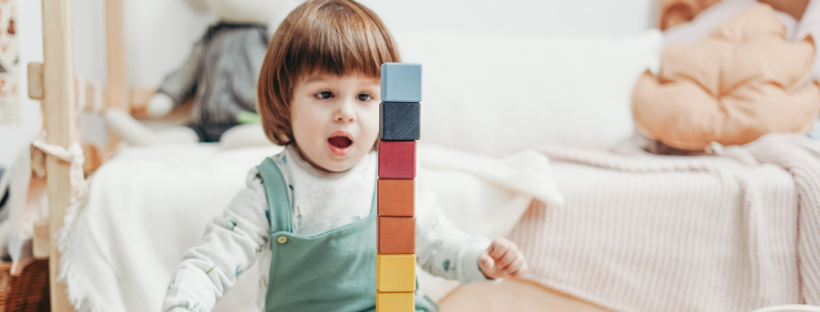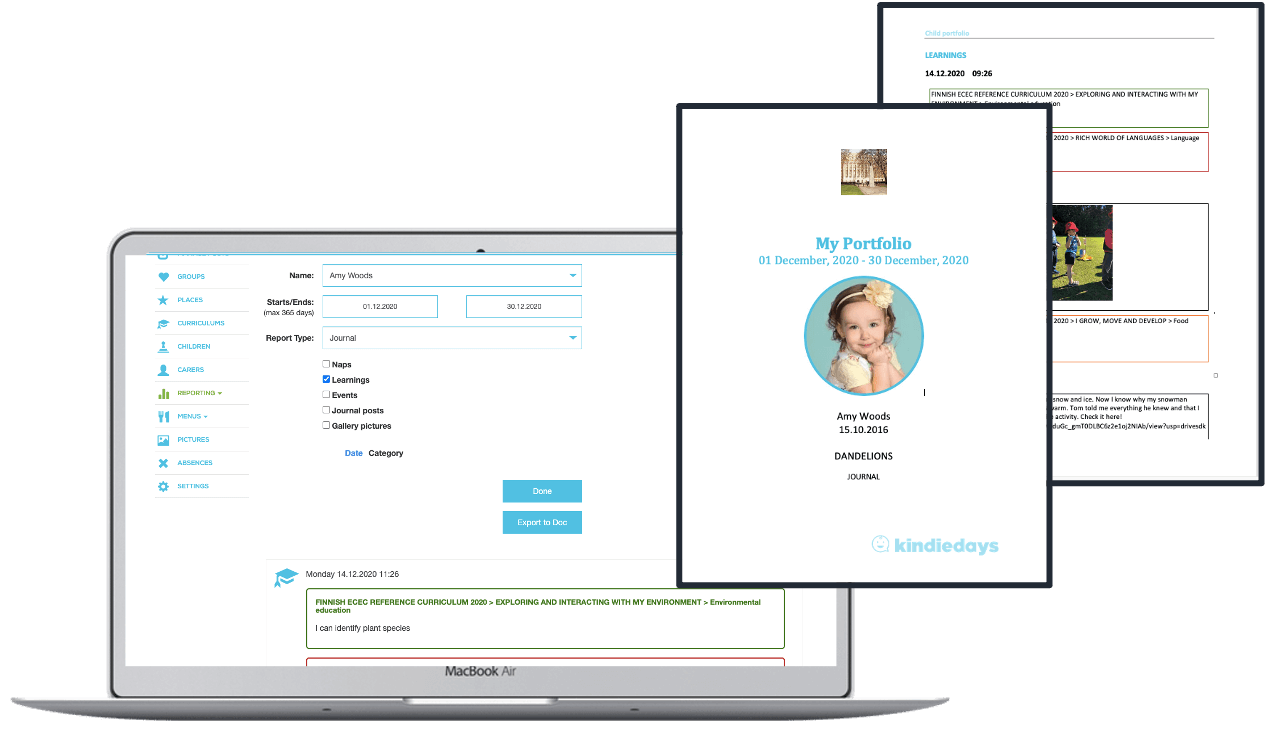
Portfolio and pedagogical documentation go hand in hand. Both focus on making the child's learning visible and enabling professional formative assessment of playful learning.
Porfolio is a compilation of various documents that show progress on the learning goals that are defined in the curriculum.
Pedagogical documentation aims to capture the meaningful learning moments of children. Educators should then use these documents to modify their planning so that children learn even better.
Pedagogical documentation is an essential working method in early childhood education and it guarantees the best possible learning path for children. All valuable documents can be saved in a child's personal portfolio. But what type of documents should the portfolio include?
Documentation is observing for example children’s play, projects, discussions, ideas and inventions via taking photos, making notes, writing down explanations as well as tricky questions, saving artwork, videoing action, recording voice... Connect observations to the curriculum objectives, for example using Kindiedays.
The process of pedagogical documentation is meaningful only, if you take advantage of the possibilities and challenges it offers. It is important to think how you can develop the activities. What themes, methods or goals should you choose next? What is your next step towards better early childhood education? (Tarkka 2018.)
.png)
Before documentation:
- First of all, decide what type of learning portfolio you are making as it matters in which from the observations are. A digital one, paper copy...?
- Have all the needed materials and tools ready for documenting! A camera, mobile phone, tablet, pen&paper...
- Think of what are meaningful and current questions, issues or topics in the group? It is impossible to document Everything so narrow it down.
- Once you have chosen a topic and method, start observing and documenting!
.png)
.png) Main ideas for activities should always come from children, but here we show two all time favorites for many children. The activities can easily be modified for your groups' interests. These activities can also evolve over time as children learn more or get interested from a different angle - maintain the activity in the schedule for couple of weeks or until children loose interest.
Main ideas for activities should always come from children, but here we show two all time favorites for many children. The activities can easily be modified for your groups' interests. These activities can also evolve over time as children learn more or get interested from a different angle - maintain the activity in the schedule for couple of weeks or until children loose interest..png)



.png)